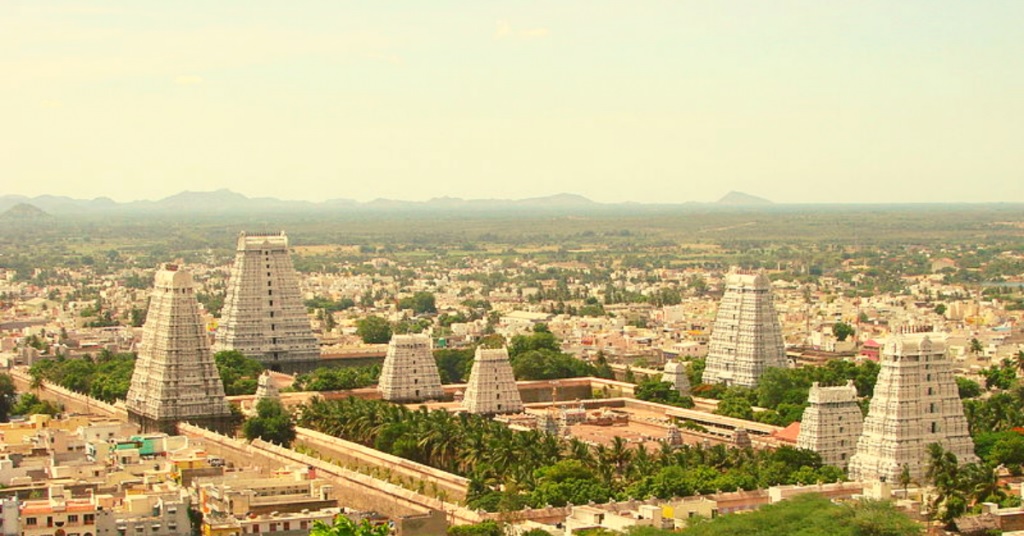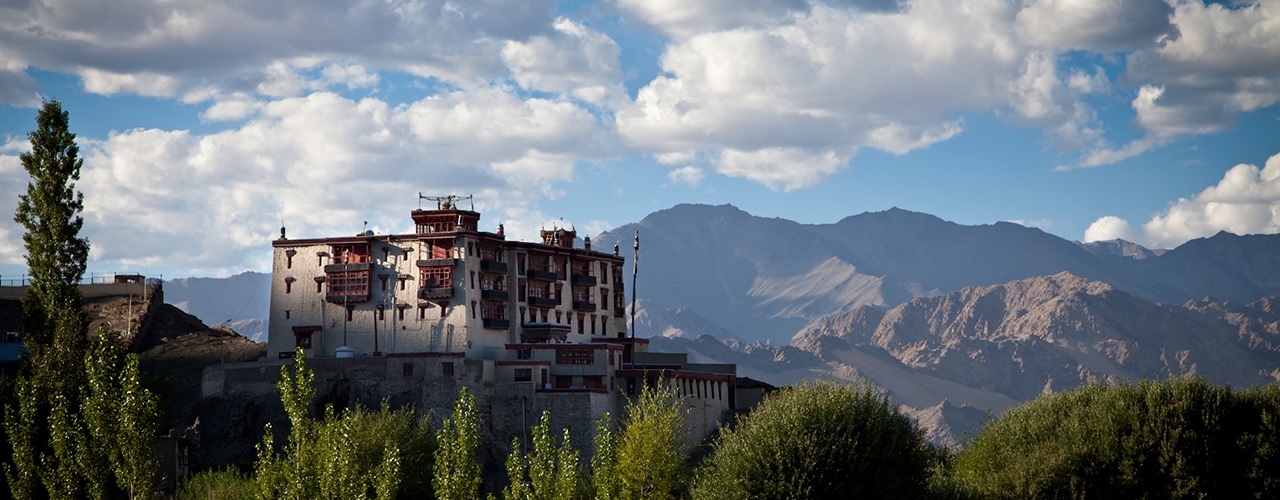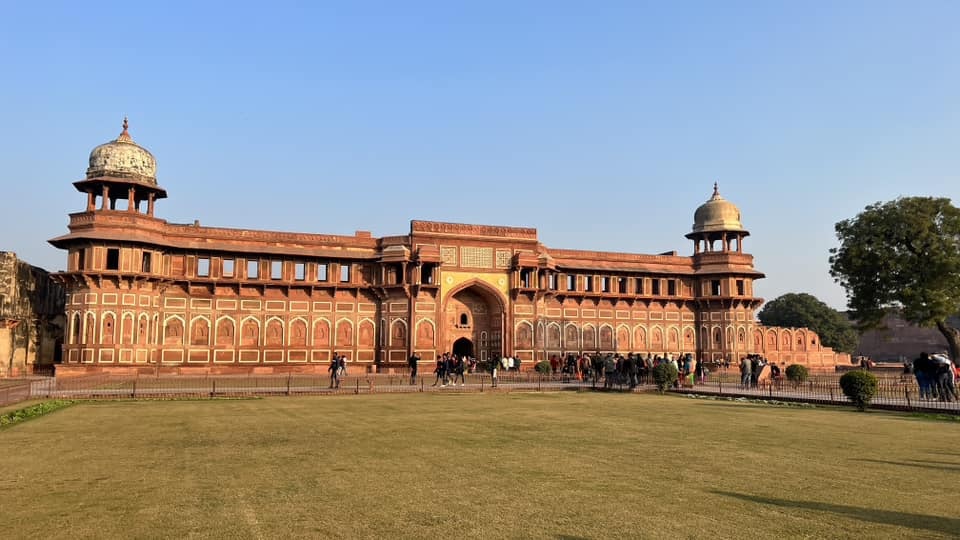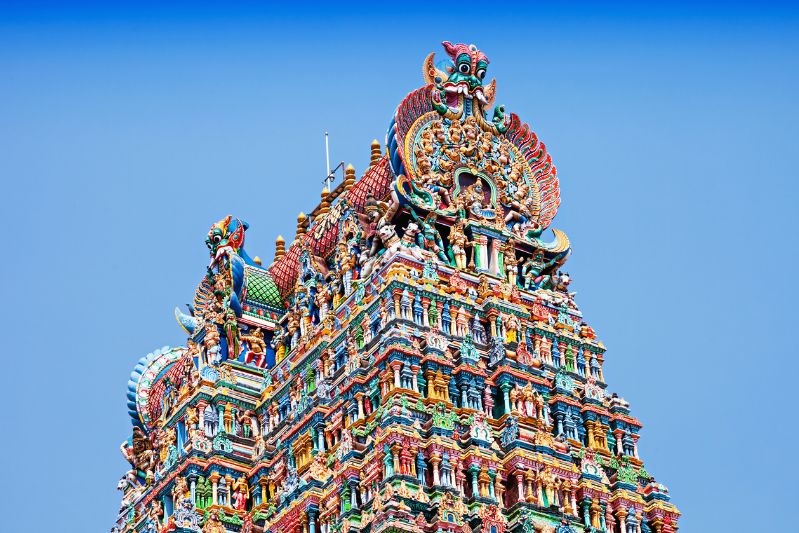Travel Guide Tiruvannamalai: We would now want to share about Tiruvannamalai, the Divine City of Spiritual Enlightenment. Travelling to Tiruvannamalai means entering the orbit of a divine field, filled with density of holiness and sounds. Tiruvannamalai is one such pilgrimage site, filled with mystical experiences, fascinating explanations, and mysterious powers. Many people believe this city to be sacred and the most cherished site since it represents one of the earth’s five cosmic elements, “fire.” Spiritual seekers from all over the world visit Tiruvannamalai, a pilgrimage city full of living enlightenment teachers. The village has long been associated with renowned yogis. Ramana Maharishi is one of the most prominent sages among them. Many more saints and sages lived and continue to live here, bringing the divine closer to humans. Tiruvannamalai is notable for the Arunachala temple. Every full moon, people walk around Annamalai hill and offer special prayers to the Arunachala temple known as Girivalam.
Here are the city details that you may refer to and include the same while planning a South India tour for your clients.
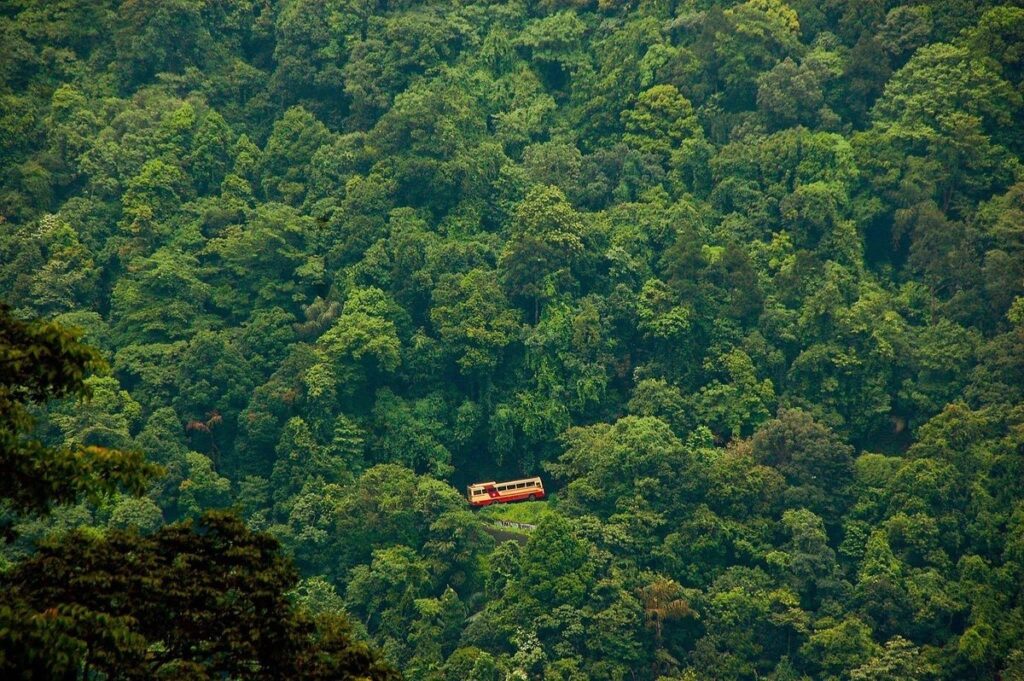
Tiruvannamalai
Tiruvannamalai is a spiritually vibrant city soaked in history, tradition, and Tamil culture. The city is in the southern state of Tamil Nadu and is a well-known pilgrimage destination. The name reflects its antiquity. “Annamalai” means “inaccessible mountain,” while “Tiru” represents magnificence. These terms come together to make Tiruvannamalai. The city is a popular pilgrimage destination for Hindus, particularly those who practice Saivism. The Arunachaleswarar Temple is one of India’s greatest Shiva temples, and the entire Arunachala hill is considered sacred. Throughout the year, devotees visit the Girivalam trail around the hill and attend events such as Karthigai Deepam (Deepam Festival).
Tiruvannamalai is a land for spiritual seekers. This city is home to numerous saints. Ramana Maharishi is the most well-known saint, and many people from all over the world visit the Ramana Ashram for extended periods to practice or meditate. Other renowned saints include Seshadri Swamigal and Bhagavan Yogi Ram Suratkumar.
The Arunachaleswarar temple here is one of the Pancha Bhootha Sthalams, which represents fire (one of nature’s five elements). The holy mountain is believed to be a manifestation of Lord Shiva. People not only visit the Arunachaleswarar temple, but they also walk around the Annamalai hill barefoot for around 14 kilometers. It’s called Girivalam. Every full moon day, there would be a bigger number of pilgrims performing this Girivalam. It is said that simply thinking of the term Tiruvannamalai might lead to Mukti (Moksha), which is emancipation from the cycle of life and rebirth. So Tiruvannamalai is not only a spiritual destination but also a major pilgrimage site for Saivites.
The city has a long history reaching back to ancient times. Archaeological discoveries indicate that villages existed here as early as the ancient period. Tiruvannamalai flourished under numerous dynasties, including the Cholas and the Vijayanagara Empire, with each putting their stamp on the architecture and culture. Arunachala Hill, which towers over the city, is a geological marvel. This enormous peak rising from the plains is breathtaking and adds to the mysterious atmosphere of Tiruvannamalai. The neighbouring woodlands add to the natural beauty of the area. The existence of Sri Ramana Ashram enriches the city’s spiritual and philosophical legacy. The ashram and the peaceful environment surrounding Arunachala Hill offer possibilities for spiritual introspection and restoration.
Despite being a pilgrimage site, Tiruvannamalai provides a sense of calm and tranquillity. From November to February, the weather is temperate and agreeable, with temperatures averaging between 20 and 30 degrees Celsius, making it excellent for sightseeing, outdoor activities such as Girivalam, and city exploration. The hottest months are April through June, and the coldest are December to January.
Ways to get to Tiruvannamalai:
By Air: Tiruvannamalai doesn’t have an airport. The nearest airport is Chennai International Airport (MAA), located about 200 Kms away. Chennai is well-connected to major cities across India and abroad. Trichy airport is also 200 km away. The second nearest airport is Kempegowda International Airport Bengaluru which is 250 km from Tiruvannamalai.
By Train: Tiruvannamalai has its railway station, well-connected to major cities in India like Chennai, Bangalore, Madurai, Tirupati, and Pondicherry.
By Road: The city is well-connected by national highways like NH 234, NH 66, and NH 289 and is easily accessible from various cities across Tamil Nadu and neighbouring states.
Major sites to see in Tiruvannamalai:
Arunachaleswarar temple:
The Arunachaleswarar Temple is one of India’s largest temples, devoted to the Hindu god Shiva. It is located at the base of Arunachala Hill in the heart of the town and is an important monument for Saivites, a division in the Hindu religion. The Arunachaleswarar Temple is one of the five Pancha Bhuta Shtalams, which are Shiva temples that reflect the five natural elements, notably fire (Agni). The temple’s primary construction was built after achieving importance during the Chola dynasty in the ninth century CE. Later, the temple was expanded and renovated by numerous dynasties like the Pallavas, Pandyas, Hoysalas, and Vijayanagara Empires. The temple’s architectural grandeur is reflected in its towering Gopurams, and the temple complex itself is a visual marvel spanning 25 acres, making it one of India’s largest.
It has four towering gateway towers with elaborate carvings and sculptures; the eastern gopuram is the highest, standing at an astonishing 11 floors and 66 meters (217 feet) high. These gopurams are artistically carved with sculptures and figures representing mythological scenes and deities. Unlike most Shiva temples, which contain stone lingams, the Arunachaleswarar temple is thought to house a naturally occurring fire lingam—a pillar of fire signifying Lord Shiva himself. This makes it particularly sacred to worshipers. The temple complex’s most significant shrines are devoted to Lord Shiva (Annamalaiyar) and his spouse Parvati (Unnamulai Amman). The thousand-pillared hall is a masterpiece of Vijayanagara architecture, and it is supported by a thousand finely carved pillars. Daily rituals and pujas (worship rites) feature elaborate processions and offerings. Karthigai Deepam is a major event held at the temple every year, bringing people from all around India.
Time to visit: 06.00 AM to 12.00 PM & from 04.00 PM to 08.30 PM.
Spiritual act “Girivalam”:
Girivalam is a unique and important rite in Tiruvannamalai. Girivalam is conducted outside the Arunachaleswarar Temple, along the road that circles the holy Arunachala hill. Girivalam translates as “going around the hill” in Tamil. It is a religious pilgrimage ceremony in which devotees circumambulate the Arunachala hill, which is revered as the embodiment of Lord Shiva. The path spans roughly 14 kilometres around the base of the hill and takes around 3-4 hours to finish at a reasonable pace. Girivalam is a symbolic act of devotion to the divine and seeking blessings from Lord Shiva. The walk is a kind of meditation in which devotees can focus inward and repeat prayers.
Walking around the hill is symbolic of overcoming worldly attachments and achieving liberation. The walk is a moderate journey that provides physical activity and an opportunity to interact with nature. The circumambulation path is a peaceful and serene location where devotees can think, pray, and meditate. Girivalam begins at the eastern entrance of the Arunachaleswarar temple and is customarily performed while facing the Arunachala hill, maintaining it to your right as you walk clockwise. Devotees usually walk barefoot as a symbol of respect. Many people repeat prayers or mantras like “Om Arunachala” during the walk.
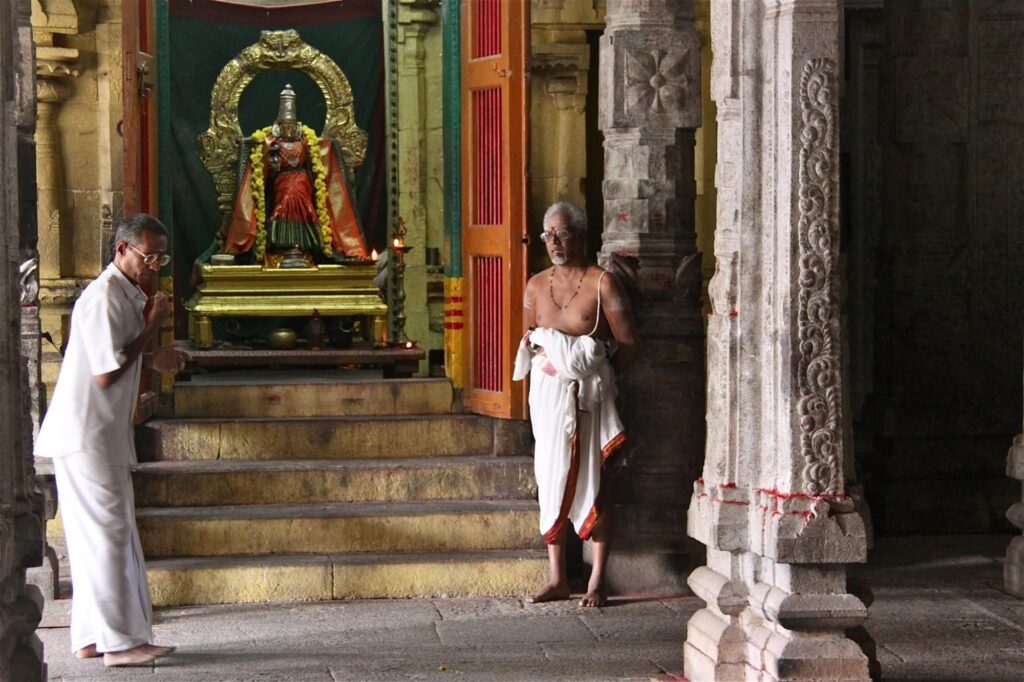
There are eight lingams (symbolic representations of Shiva) positioned along the walkway. Devotees frequently pay their respects at these sanctuaries. Overall, Girivalam is a unique and fascinating experience that allows pilgrims to connect with the majesty of Arunachala while also participating in a vital aspect of Hindu pilgrimage.
A special remark for persons who are unable to walk the entire trail, such as senior citizens and children, is that Girivalam can be completed using a car. However, during temple festivals or other big special days, temple administrators and local police prevent vehicles from entering Girivalam because of the enormous audience and the possibility of interfering with the devotees’ performance while walking.
Note: Vehicle entry to the temple is banned on full moon days and festival days such as Mahashirvathri and Deepam Festival; guests must take a local autorickshaw, which can also travel specified distances. Guests will need to travel roughly 1-2 kilometers.
Virupaksha Cave: The Virupaksha Cave is a holy cave found on the eastern slopes of Arunachala (Red Mountain) in Tiruvannamalai. Virupaksha cave is located on Arunachala hill, just a few minutes from Skandasramam. It is well known as the home of Sri Ramana Maharshi, a great saint and philosopher who stayed there for seventeen years and spent a significant amount of time in quiet. The cave is believed to have the shape of the “Om,” a revered symbol in Hinduism. It is said that a saint named Virupaksha Deva lived in this cave, which is why it was named after him. It is said that his corpse was reduced to ashes following his Samadhi (enlightenment) and is now kept in this cave, which is visited daily by devotees. A unique sofa stone outside the cave is also regarded as a noteworthy feature. The cave is a small and simple location, but it is considered to have a powerful and tranquil energy. Many tourists describe feeling quiet and serene after visiting the cave. The path to the cave is steep and difficult for individuals who are not used to hiking. However, the hike is worthwhile for the opportunity to visit this holy site.
Time to visit: 08.30 AM to 04.30 PM
Skandasramam: Skandasramam near Tiruvannamalai is a cave residence on the slopes of Arunachala (Red Mountain). This cave is well-known as the home of Sri Ramana Maharshi, a great saint and philosopher who lived here from 1916 to 1922. It is a modest cave shelter that overlooks the Arunachaleswarar Temple, the world’s largest temple complex devoted to Lord Shiva. The path to Skandasramam is a twisting uphill climb that lasts about 1.4 kilometres. While it can be physically challenging, it is noted for its stunning scenery and serene environment, making it a perfect location for meditation and spiritual contemplation. The path is tortuous and hard, especially during the rainy season. This cave is important not just because Ramana Maharshi lived here, but also because his mother received spiritual training there. It is also where Ramana Maharshi’s close disciple, Nagasundaram, attained sannyasa. Skandasramam provides a breathtaking view of Arunachaleswarar Temple and the surrounding plains.
Timings: Skandasramam is generally open from 08.30 AM to 04.30 PM.
Ramana Ashram: Sri Ramanasramam is a spiritual center in Tiruvannamalai. The Ashram is particularly notable since it was home to Sri Ramana Maharshi, a respected saint and philosopher, from 1922 until he died in 1950. The Ashram is located at the base of the sacred mountain Arunachala, which has been recognized as a source of enormous spiritual strength since antiquity. The ashram welcomes spiritual seekers from all areas of life to immerse themselves in Ramana’s teachings, which emphasize self-inquiry (Atma Vichara) as a path to liberation and the spiritual energy of Arunachala. The ashram welcomes people of various faiths and origins, and there are no requirements to participate in any specific beliefs or worship customs.
The ashram’s most precious spot is Ramana Maharshi’s samadhi shrine. It is a small structure where Ramana Maharshi’s mortal remains are housed. Devotees from all over the world gather at the shrine to offer their respects. The ashram’s meditation hall is a vast, open room where people can meditate in peace and solitude. The hall is available all day, and you don’t have to be a Hindu or follow any particular faith to meditate there. The ashram contains a well-stocked library with literature about Ramana Maharshi’s teachings, as well as works on Hinduism, philosophy, and spirituality. Visitors to the ashram can stay in humble but comfortable accommodations. There are rooms available for short-term stays of one week or less. They also serve visitors with complimentary vegetarian lunches daily. This is a method to demonstrate hospitality and ensure that everyone has access to essentials. The ashram is a non-profit organization governed by a board of trustees. Overall, Sri Ramana Ashram is an excellent place to come if you want to find peace and calm while also learning more about Ramana Maharshi’s teachings.
Timings: 05.00 AM to 11.00 AM & from 02.00 PM to 09.00 PM
Mahashivratri, often known as the “Great Night of Shiva,” is a major Hindu festival celebrated across India from February to March. However, special pujas are held at the ashram throughout this period. Bhagavan’s Jayanti (Sri Ramana Maharshi’s birthday) is a big celebration at the Ashram in December or January, featuring elaborate pujas (worship ceremonies) and special festivities.
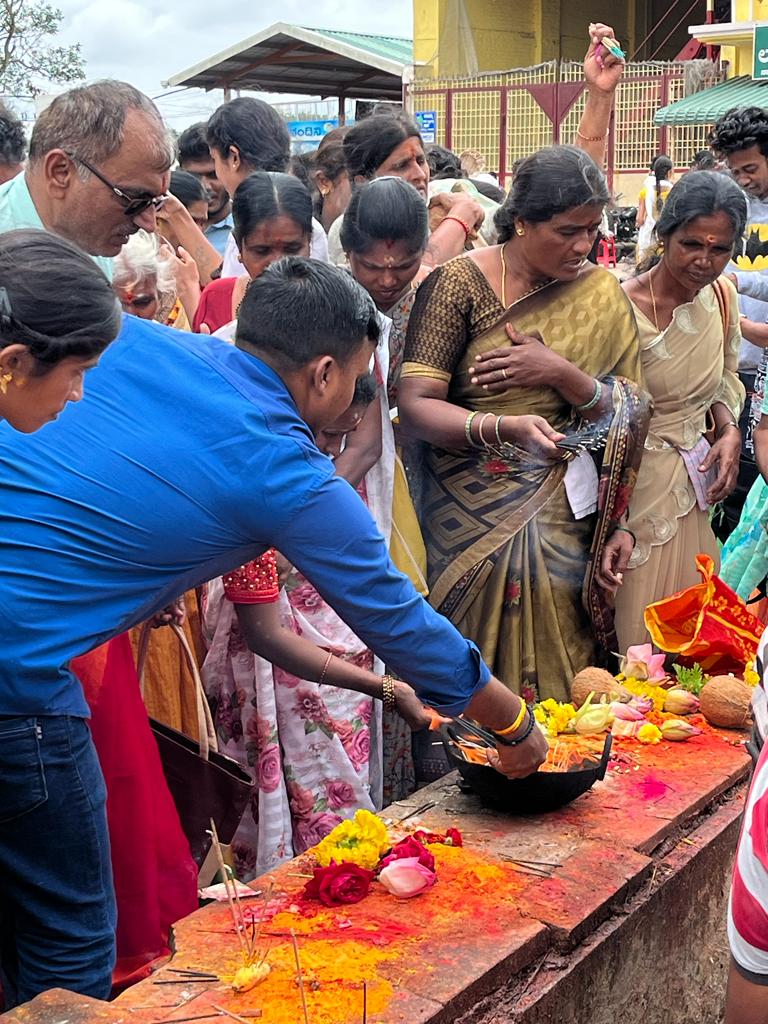
Yogiramsurathkumar Ashram: Yogi Ramsurat Kumar Ashram is a spiritual center in Tiruvannamalai. It was founded in honour of Yogi Ramsuratkumar, a respected saint who lived as a beggar on the streets of Tiruvannamalai in the early twentieth century. He is thought to be a saint who achieved enlightenment. The ashram is a big, sprawling complex that attracts devotees, pilgrims, and visitors alike. It offers a serene atmosphere, making it ideal for meditation and spiritual reflection. The ashram’s enormous central hall serves as a hub for chanting and other devotional activities. There is a special meditation chamber where people can meditate in a tranquil setting. There is also a space where guests can learn about Yogi Ramsuratkumar’s life and teachings. The ashram gives housing for tourists and free food (annadana) to those in need. This aligns with Yogi Ramsuratkumar’s message of compassion and devotion to others. There is a modest shrine dedicated to Yogi Ramsuratkumar’s where people can show their respects. Overall, the ashram provides an opportunity for individuals to learn about his teachings and interact with his spiritual presence.
Timings: 05.00 AM to 08.00 PM
Guide: Please note the destination Tiruvannamalai doesn’t have any licensed Guide at all. If all clients require a Guide, then we need to bring one from Chennai only, which would add to the cost accordingly. However, to be honest, a Guide is not required as one’s soul and mind need to connect spiritually in Tiruvannamalai, to understand the destination better.
Major Festival celebrated in Tiruvannamalai:
Maha Shivaratri (February – March): Maha Shivaratri at Tiruvannamalai is a particularly remarkable and beautiful ceremony held between February and March because the city is considered Lord Shiva’s holy home. The festivities extend many days, with the main event being the night of Maha Shivaratri. The entire temple complex is adorned with intricate illumination, thousands of lights, diyas (oil lamps), and flowers. Devotees crowd the temple throughout the day and night, performing puja (worship rituals) and chanting hymns. Throughout the night, a special abhishekam (holy bath ceremony) is done for the Shivalinga, which is Lord Shiva’s representation. These abhishekam make use of sacred substances like milk, ghee, and panchamrita (a combination of five nectars). One of the most remarkable activities is the huge procession of the ‘Thanga Ther’ (Golden Chariot) carrying Lord Shiva’s statue through the streets the day before Maha Shivaratri. Many devotees perform the Girivalam (circumambulation) of the holy Arunachala hill, which is regarded as a sacred pilgrimage. This can be accomplished on foot or via walking routes around the hill’s base. It is an important spiritual exercise for followers during Maha Shivaratri. The entire town is filled with a devotional and festive atmosphere. There will be street performances, devotional music, and food vendors. People come from all over India and even outside India to participate.
Karthigai Deepam (November – December): Karthigai Deepam, or “Festival of Lights,” is one of Tamil Nadu’s most important festivals. It commemorates the triumph of good over evil, as symbolized by the lighting of lamps with the big flame ignited atop Arunachala Mountain, which represents the light of knowledge conquering darkness. In Tiruvannamalai, it is even more significant because a giant ghee (clarified butter) lamp is lit atop the Arunachaleswarar Temple, symbolising Lord Shiva’s flaming appearance as a pillar of light. The event, also known as Karthigai Brahmotsavam, lasts ten days. Throughout the ten days, the temple hosts unique pujas (worship ceremonies) in honour of Lord Shiva. The highlight of the festival is the lighting of the Maha Deepam (a gigantic ghee lamp) atop the Arunachaleswarar Temple. The event culminates with the lighting of the Maha Deepam (Great Lamp) on top of the temple. This lamp is lit in the evening, and the holy fire is claimed to be obtained via a specific yagna (fire ceremony) performed by temple priests. It’s a stunning sight, visible for miles. Thousands of devotees converge to see this breathtaking spectacle. Like Maha Shivaratri, devotees celebrate Girivalam by circumambulating the holy Arunachala peak. This is an important spiritual practice for believers during Karthigai Deepam (the full moon day) and contributes to the joyful ambience. During this festival, Tiruvannamalai’s accommodations tend to fill up rapidly. This year it will be celebrated on 13th December 2024.
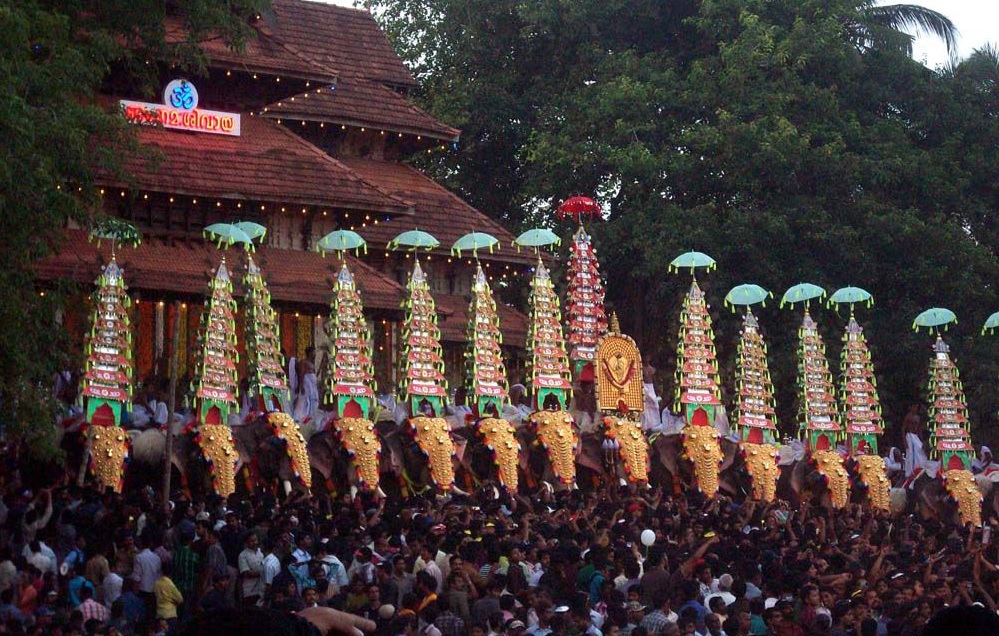
Bhagavan’s Jayanti (Sri Ramana Maharshi’s birthday): This day commemorates the birth anniversary of Sri Ramana Maharshi, India’s revered saint and philosopher. His teachings emphasized self-inquiry (Atma Vichara) as the means to liberation (moksha). While there are no large-scale public celebrations, followers around the world commemorate this day with special pujas (prayers) and meditations dedicated to Sri Ramana. This day may be marked by special prayers or speeches at the Sri Ramana Ashram in Tiruvannamalai. Special pujas (worship rites) are organized, and devotees congregate to chant hymns and meditate in their honour. The ashram may also hold seminars or other activities about Ramana Maharshi’s life and teachings.
Date: Bhagavan’s Jayanti falls on Saturday, December 28th, 2024.
Hotel details in Tiruvannamalai:
| Hotel Names | Category | Distance from the temple | Website Link |
| Sparsa Resort | Standard | 5 Kms from the temple | https://sparsaresorts.com/ |
| Hotel Amoha | Standard | Near (800 mts) to the temple | http://amohahotel.com/# |
| Hotel Seasons | Standard | 3.5 Kms from the temple | https://www.hotelseasons.in/ |
| Hotel Arpana | Standard | 2 Kms from the temple | https://www.arpanaahotels.com/ |
| Hotel Athena | Standard | 4.5 Kms from the temple | https://www.athenahotel.in/ |
| Hotel Sterling Arunai Anantha | Standard | 6 Kms from the temple | https://www.sterlingholidays.com/resorts-hotels/arunai-anantha-tiruvannamalai |
| Hotel Himalayaa | Standard | 3 Kms from the temple | https://hotelhimalayaa.in/ |
Restaurants in Tiruvannamalai
As it is a pilgrim destination, only pure vegetarian food will be provided in Tiruvannamalai.
A2B Restaurant
Vasantha Bhavan
Also, we suggest the guests take their food at the Hotel where they stay.
Vellore: A City Steeped in History and Heritage
Vellore, a large metropolis in northern Tamil Nadu, has a rich and fascinating past. It has a long history, dating back to the Pallava dynasty in the third century CE. Vellore has been ruled by a variety of empires and kingdoms throughout the centuries, including the Cholas, Nayaks, Marathas, and Carnatic Nawabs. It was even briefly under the control of the Bijapur Sultanate. The city is known for its temples, forts, and educational institutions. Vellore has grown as a key educational centre, with students pursuing academic achievement and medical tourists seeking world-class healthcare. The city is home to two of India’s leading educational institutions: Christian Medical College & Hospital (CMC) and VIT University.
To Reach the City in three main ways:
By Air: The nearest airport is Chennai International Airport (MAA) which is 160 Km away from Vellore & easily connected with major states & countries. The second nearest airport is Kempegowda International Airport Bengaluru (BLR) which is 200 Kms away from Vellore.
By Train: The city has its railway junction, Vellore Junction (VR) located on the Chennai – Bangalore mainline. There are frequent trains to Vellore from major cities in India, including Chennai, Bangalore, Mumbai, Delhi, and Kolkata.
By Road: Vellore is well-connected by a network of national highways and state highways, making it easily accessible by road from various locations such as NH 46, NH 234 and SH 9. It will easily connect with major destinations of Tamil Nadu and other states.
Interesting places to visit in Vellore:
Vellore Fort: It’s a monument rich in history. The Vellore Fort, a massive 16th-century edifice, sits proudly in the heart of Vellore, Tamil Nadu. It’s a historic landmark that showcases a variety of architectural styles while also serving as a silent witness to empires’ development and fall. It was constructed in 1566 by Vijayanagara Empire rulers under Emperor Sadasiva Raya. The fort functioned as the Aravidu Dynasty’s imperial capital in the 17th century. The fort had witnessed major events such as the Battle of Toppur (1620s) between two factions of the Raya family. It went through the hands of several monarchs, including the Bijapur Sultans, Marathas, Carnatic Nawabs, and, lastly, the British East India Company. He also participated in the 1806 Sepoy Mutiny, a major insurrection against British control in India. The fort is a notable example of military architecture from the time. It’s made of granite and has impressive features. Grand ramparts and formidable walls provided a strong barrier against attackers. A wide moat, or deep-water channel, encircles the fort, making it difficult for adversaries to breach. Drawbridges: These retractable bridges provided regulated passage across the moat. Strategic gateways strengthen entry points with hefty doors to control access. Watchtowers also provided a vantage point from which sentinels could monitor potential dangers.
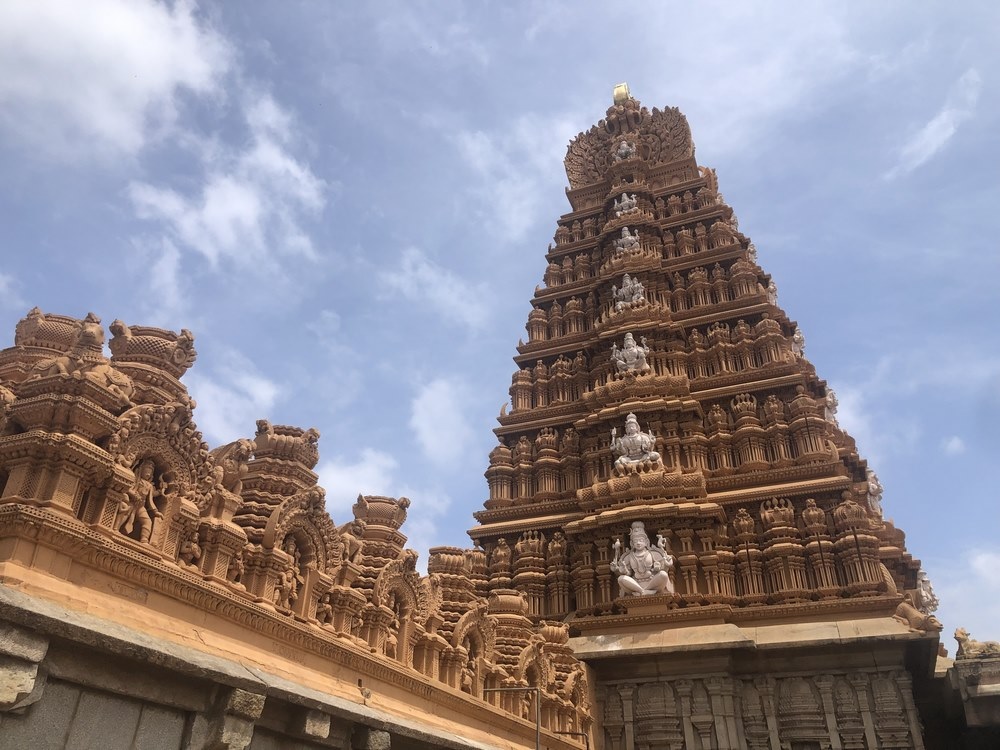
Fort houses various historical structures within its boundaries as listed below:
Jalakandeswarar Temple: A beautiful ancient Shiva temple known for its intricate carvings and peaceful atmosphere.
St. John’s Church: An 18th-century Anglican church showcasing colonial-era architecture built during the British Era.
Shah Jahan Mosque: A mosque built during the rule of the Muslim sultanates, showcasing Islamic architectural styles.
Tipu Mahal: The former palace of Tipu Sultan – 18th century, the ruler of Mysore, who was briefly imprisoned here. Begum Mahal for Tipu Sultan’s wives and a smaller palace called Kandi Mahal within the fort complex.
Government Museum: Archaeological Museum houses a collection of artefacts showcasing the region’s history and culture.
Vellore Central Jail: The place where Tipu Sultan’s family and the last king of Sri Lanka, Vikrama Rajasinha, were held captive.
Secret Passage: Legend has it that the fort has a secret passage leading out to Virinjipuram, about 12 kilometres away.
Interesting facts about Fort are that it witnessed the Sepoy Mutiny of 1806, one of the first major uprisings against the British East India Company’s rule in India. The fort also served as a prison for the family of Tipu Sultan, the last king of Sri Lanka.
Time to Visit: 08.00 AM to 06.00 PM
Entrance fee: Rs.5
Sripuram Golden Temple (Vellore Golden Temple): It is also known as the Sri Lakshmi Narayani Golden Temple and is a major landmark in Vellore. It is a magnificent monument to Lakshmi Narayani, a combination of the Hindu deities Lakshmi (Goddess of prosperity) and Vishnu (God of preservation). The temple is in Sripuram Spiritual Park, on the outskirts of Vellore city. It was developed between 2001 and 2007 by the Sri Narayani Peedam philanthropic trust. The Peedam’s spiritual head, Sri Sakthi Amma, consecrated it in 2007. The temple is the world’s largest and covered in gold leaf. The entire temple, including the gopurams (towers), vimanas (shrine roofs), and mandapams (halls), is covered in over 1,500 kg of gold foil, earning the name “Golden Temple.” The main temple edifice features nine golden gopurams, each painstakingly crafted and towering over the temple grounds. The inner sanctuary holds Lakshmi Narayani’s murtis (idols), which are fashioned of white marble. It was created in the shape of a star to symbolize the eight directions and the divine’s all-encompassing presence. To reach the main sanctum, travellers follow a star-shaped route. Along the route, you’ll see shrines dedicated to a variety of deities, including a silver Ganapati (elephant god) and a Srinivasa Perumal (Vishnu) temple. While the gold leaf is undeniably gorgeous, the Sripuram Golden Temple’s significance goes beyond its tangible splendour. It is a place of worship where believers can find peace and spiritual comfort. The Sripuram Golden Temple is a unique blend of architectural beauty, spiritual significance, and cultural heritage.
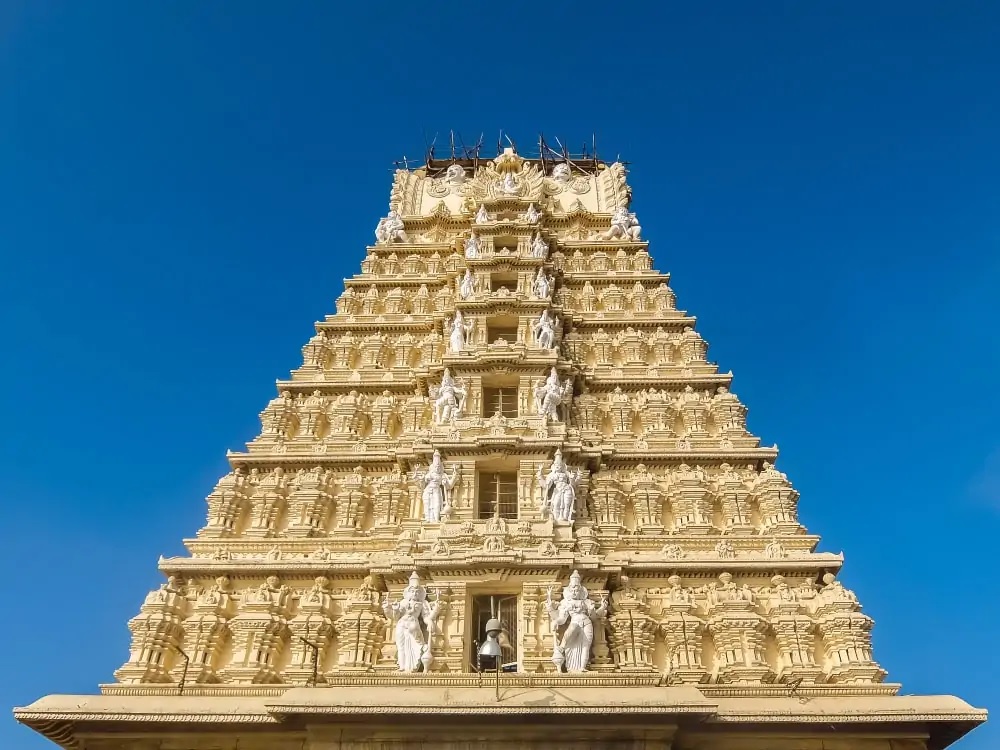
Timing: 08.00 AM to 07.30 PM
Ratnagiri Murugan temple: The Ratnagiri Murugan Temple is a Hindu temple dedicated to Lord Murugan at Thirumanikundram, Vellore. It is believed to have been built in the 14th century and was mentioned by Tamil poet Arunagirinathar in his masterwork, the Thiruppugazh. The temple underwent major renovations and expansion in the 1980s to reach its current size. Murugan temples, according to ancient scriptures, are often built on hillocks. Devotees believe that the shrine’s Murugan idol and Guru Swami Balamurugan Adimai (born 1941) are manifestations of the deity. The temple contains two forms of Lord Murugan: Thirukkolam, depicted with his wives Valli and Devasena, and Gurukkolam. Bala Murugan, the principal deity’s idol, is mounted in a granite chariot. The garbhagriha (sanctum sanctorum) is constructed of granite and styled in Chola architectural style. The shrine’s walls bear small idols of Ganesha, Dakshinamurthy, Brahma, Durga, and Chandikeswarar. There are two temples dedicated to Lord Vinayaka: one on top of the hill and one at the bottom. The poojas (prayers) at this temple are held in Tamil, as opposed to the more common Sanskrit utilized in other temples. Timings: 06.00 AM to 01.00 PM & from 04.00 PM to 08.00 PM
Hotel details in Vellore:
| Hotel Names | Category | Website Link |
| Regency Sameera Vellore by GRT hotels | Standard | https://grthotels.com/vellore |
| Hotel Khanna Fiesta | Standard | http://khannafiesta.com/ |
| Hotel Fortune Park | Standard | https://www.itchotels.com/in/en/fortunepark-vellore |
| Hotel Poppys Anukula Residency | Standard | https://anukulasresidency.com/ |
Restaurants in Vellore:
Darling Namma Veedu – Non-Veg Restaurant
The Vellore Kitchen – Indian Restaurant – both Indian and Asian
Suprabaatham – Veg Restaurant
Gingee:
Gingee, also known as Senji or Jinji, is a historical town located in Tamil Nadu’s Villupuram district. Gingee’s narrative begins in the second century BC, with connections to ancient Tamil literature. The Pallavas, Cholas, and Medieval Cholas are thought to have dominated the region.
Gingee is easily accessible by road, air, and rail.
- Gingee’s closest airport is Chennai, which is 140 kilometres away.
- The nearest railway station to Gingee is Tindivanam Junction (TMV), which is 12 kilometres distant.
- Gingee is connected to neighbouring Tamil Nadu cities via several state highways. The city is well connected by road to major cities in South India by national highways NH 48 and NH 44.
Special Remark: There are no good hotel options available in Gingee. So guests will have to do an excursion visit to Gingee or as an en route Visit.
The only main attraction of Gingee is Gingee Fort: The Gingee Fort, also known as Senji Fort or Jinji Fort, is a massive and historic monument that dominates Gingee’s landscape and serves as the town’s crown jewel. Renowned for its strategic location and robust defences, it has been dubbed “the Troy of the East” by the British and “the most impregnable fortress in India” by Shivaji, the Maratha monarch. The Cholas, a prominent South Indian dynasty, erected the fortress’s foundations in the ninth century AD. Throughout the years, several dynasties, including the Nayaks of Madurai, the Vijayanagara Empire, and the Marathas, added to and renovated the fort’s structure. Each age left its stamp on the architectural style and strategic plan. The Gingee Fort Complex is unique in that it is located across three independent granite hills: Rajagiri (the highest), Krishnagiri, and Chandrayandurg. Each hill is fortified with its ramparts, entrances, and bastions, resulting in a multi-layered defence system.
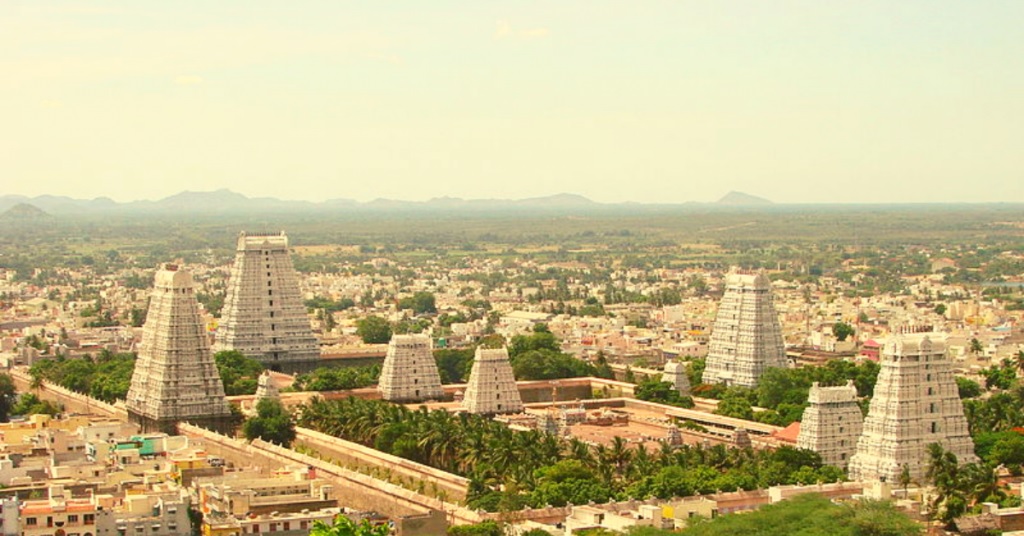
Rajagiri Hill (King’s hill) : The main citadel is located on the largest and most intimidating hill, and the entrance is marked by the Rajagiri Gopuram (gateway tower). Inside, you’ll find the Kalyana Mahal (marriage hall), granaries, dungeons, wells, and the remains of Nayak palaces.
Krishangiri Hill (Hill of Krishna): The central hill is a difficult ascent and provides panoramic views of the surroundings. It features watchtowers, bastions, and cannons. It also houses the Jakatalamman Temple, which honours a local deity.
Chandrayandurg Hill (hill of the Moon): The smallest of the three hills, it served as a well-fortified prison and a lookout point with spectacular views of the surrounding lowlands. It houses the magazines that store ammo.
Each citadel offers unique experiences like exploring temples, witnessing cannons, and marvelling at the architectural ingenuity. Legend speaks of a network of secret underground passages within the fort, although their exact location remains a mystery.
You can explore beyond the walls of the Fort. The Jaalakandeeshwarar Temple, located at the foot of Rajagiri Hill, provides a tranquil break after exploring the fort, while the Anamalai Murugan Temple, dedicated to Lord Murugan and located near Chandrayandurg Hill, offers picturesque views.
Point to be noted: Exploring the fort requires climbing steps and navigating uneven terrain.
Time to Visit: 07.00 AM to 03.00 PM (After 03.00 PM, visitors are not allowed to climb up the hill)
Entrance fee: For Foreigners – Rs.300 & for Indians – Rs.40
Video Camera Fee: Rs.25
Camera Fee: Rs.25
Holidays: No

